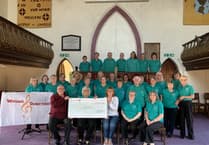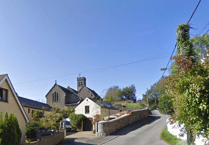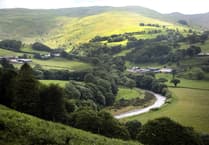As the new year begins, as predicted, the world continues to produce more milk than the market needs and, although the surplus is expected to reduce over the first half of 2016 as production slackens, the market’s recovery could be slower.
Particularly affected were the traditional family farmer such as Simon Richards who has headed the County branch of the NFU in Pembrokeshire over the past year. He was one of those who received just half a day’s notice last August that the buyers were about to cut further the price he was to be paid for his milk.
Encouragingly, last month’s Global Dairy Trade auction showed a 1.9 per cent increase.
Simon Richards is the fourth generation to farm Little Hasguard which amounted to 217 acres when purchased from the Kensington estate by his great-grandfather on November 5, 1914, for £177 per acre!
Run as a traditional all grass mixed farming system, rotationally grazed with the use of an electric fencer, further blocks of 36 and 38 acres have been acquired over the past 20 years and the farm now carries a dairy herd of 230 milkers, mostly Friesian, but also with a few cross-bred.
“Thinking back, we had just 35 cows when I left school and when quotas were introduced in 1984 we still only had 50,” said Simon.
The old cowshed had been replaced with an abreast milking plant in 1975; as the herd increased in size a 10/20 herringbone set-up was installed in 1989 and in turn a ‘no frills’ 24/48 parlour came into operation 10 years ago. Until 1982, most of the cows were out wintered and healthwise all have been free of bTB for the past 10 years.
Originally calving all year, a switch was made to ‘Spring’ calving a few years ago and the herd is now dried off each year by the end of November, with 85 per cent calving again during February and March, producing an average lactation yield of 5,500 litres from about one tonne of purchased feed. All cows are turned out to quality grass by day as they calve - the farm being a former regional winner in the grassland competition.
The herd produce sufficient replacement heifers - between 40 and 50 - each year, with the remainder cows put to beef bulls - British Blue or Hereford - and the progeny are sold off as strong stores.
Simon’s wife, Alison, has always taken charge of all calf rearing in addition to her many tasks as a farmer’s wife.
“Because of Simon’s involvement with milking, over the years I’ve always had to be available to herd the cows across a main road, take the children to school, swimming lessons, music tuition and the YFC as they got older” she said.
“She also ably copes with much of the farm paperwork and I quite honestly couldn’t farm without her,” insisted Simon proudly.
The couple have three daughters, Lorna, 20, Alice, 19, Jenny, 16, and one son, 17-year-old John, who is presently in his second year of an agricultural course.
Looking into 2016, Simon is genuinely concerned.
“Producing around one million litres annually we have to plan our business years in advance and overall profitability today strikes a very fine balance - if dairy farmers produce just 99 per cent of the industry’s requirements we’re in business, but 101 per cent could spell disaster,” he feared.




.jpeg?width=209&height=140&crop=209:145,smart&quality=75)
Comments
This article has no comments yet. Be the first to leave a comment.